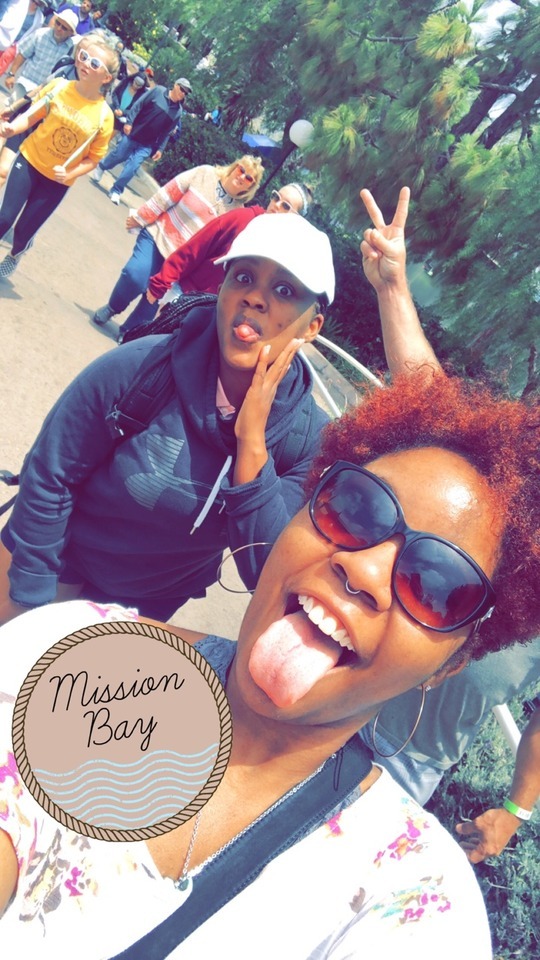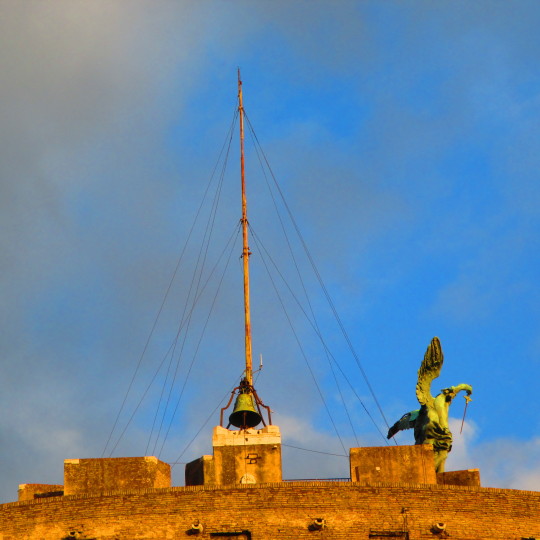Photo






Too tired to write a post so here are some pics of day 2
#san diego#traveller life#travel girl#travel#west coast adventures#west coast#sea world#perfect weather#ootd#loving it here#ride share everywhere
2 notes
·
View notes
Text
Fangirl Traveller Problems #1
When you can’t go on your tumblr feed bc you know smutty fanart is not just a possibility but an inevitable reality
#fangirl#travel girl#fangirl problems#san diego#traveller life#fangirl tumblr#drarry smut#inevitable#but im never going to change if#*it
33 notes
·
View notes
Text
California Gurl!
Okay, maybe that’s a bit of an exaggeration but I have finally made it to the West Coast. It’s always been weird that I’ve left the country repeatedly over the last few years yet had never made it out to any part of the United States not on the Eastern Seaboard. FINALLLLYYYYYY!!!! It was a crazy day actually, even for someone like me who enjoys travelling and airports and air planes. First surprise of the day was that I had to pay for my checked bag because I definitely thought I was going to get it free w/ my military idea. Joke was on me! But I rolled with it, ya know. The first leg was aight. I purposely made sure to choose window seats on all my flights because that view, right? For whatever reason though, my neighbor wanted to be a social person and wanted to talk to me.

Do I look approachable? IRL, yes because I’m not an intimidating person but at least in my head I feel intimidating and tuff! Anyways, his first words to me are “Do you support Tr*mp?” and I’m just like hereeeee we go. I just wanted to read my Lean In: Graduates and get myself woke and whatnot to women in the workforce. It wasn’t awful once we took off but let’s just say it was a unique experience for me to have an OVERLY social row-mate. The second leg was the worst (from OHD to SAN) because some unexpected storm front had the plane stuck in traffic on the runway (who knew that was a thing!) for like an hour.

Once we FINALLY got on the plane we then had some issue with the fuel gauge. While I appreciate the fact that they wanted to make sure our flight stuff was correct, COME ON we’d already been there long past our original departure time. I tried to sleep because by this point it was already like 9pm ET but I couldn’t. Watched a couple episodes of Troy: Fall of a City.... eh to say the least. Got back with Mama at the baggage claim in San Diego and hailed a cab, ‘twas easy-peasy. Honestly exhausted and just managed to not fall asleep into my carbonara at the Cheesecake Factory and had a celebratory mojito from the bar. Long-and-short of it, it’s been a great, crazy, new day. Catch your girl in Cali!

#San Diego#first day#west coast adventures#overly chatty neighbors#plane adventures#gif-tastic#cali girl#hours later#actually exhausted#can't see straight#time to KO#travel girl#traveller#wanderlust
0 notes
Text
Useful knowledge
Right now, I’m sifting through 50+ applications for a new entry-level position. Here’s some advice from the person who will actually be looking at your CV/resume and cover letter:
‘You must include a cover letter’ does not mean ‘write a single line about why you want this position’. If you can’t be bothered to write at least one actual paragraphs about why you want this job, I can’t be bothered to read your CV.
Don’t bother including a list of your interests if all you can think of is ‘socialising with friends’ and ‘listening to music’. Everyone likes those things. Unless you can explain why the stuff you do enriches you as a person and a candidate (e.g. playing an instrument or a sport shows dedication and discipline) then I honestly don’t care how you spend your time. I won’t be looking at your CV thinking ‘huh, they haven’t included their interests, they must have none’, I’m just looking for what you have included.
Even if you apply online, I can see the filename you used for your CV. Filenames that don’t include YOUR name are annoying. Filenames like ‘CV - media’ tell me that you’ve got several CVs you send off depending on the kind of job advertised and that you probably didn’t tailor it for this position. ‘[Full name] CV’ is best.
USE. A. PDF. All the meta information, including how long you worked on it, when you created it, times, etc, is right there in a Word doc. PDFs are far more professional looking and clean and mean that I can’t make any (unconscious or not) decisions about you based on information about the file.
I don’t care what the duties in your previous unrelated jobs were unless you can tell me why they’re useful to this job. If you worked in a shop, and you’re applying for an office job which involves talking to lots of people, don’t give me a list of stuff you did, write a sentence about how much you enjoyed working in a team to help everyone you interacted with and did your best to make them leave the shop with a smile. I want to know what makes you happy in a job, because I want you to be happy within the job I’m advertising.
Does the application pack say who you’ll be reporting to? Can you find their name on the company website? Address your application to them. It’s super easy and shows that you give enough of a shit to google something. 95% of people don’t do this.
Tell me who you are. Tell me what makes you want to get up in the morning and go to work and feel fulfilled. Tell me what you’re looking for, not just what you think I’m looking for.
I will skim your CV. If you have a bunch of bullet points, make every one of them count. Make the first one the best one. If it’s not interesting to you, it’s probably not interesting to me. I’m overworked and tired. Make my job easy.
For an entry-level role, tell me how you’re looking forward to growing and developing and learning as much as you can. I will hire genuine enthusiasm and drive over cherry-picked skills any day. You can teach someone to use Excel, but you can’t teach someone to give a shit. It makes a real difference.
200K notes
·
View notes
Video
youtube
Assignment #7- Final Film Project exploring how history is alive and remembered at the Roman Forum
#Remembering History#Politics and Rememberance#Monumental Politics#Study Abroad#Assignment 7#Final Film
0 notes
Text
Living History in Rome
Less prominent in the United States, particularly in comparison to cities such as London, Greece, or Rome, is the phenomenon of regularly treading the paths of the most celebrated people and events in history. Those living in historically rich cities take for granted the sites and monuments they routinely pass en route work or meet with friends before going out for a night on the town. Indubitably, Rome is one of these cities where the readily available history is easy to overlook as a part of life, maybe even an unfortunate part in the height of tourist season. However, how many of the stories are known or easily recalled by those who work and live in the presence of such memorialization? Unsurprising for a student of history, very few seem to know more than the basics of many prominent structures. The perfect example of this was the of the Vittorio Emanuele II Monumento Nazionale, or Altare della Patria all but the most knowledgeable have about the historic structure.
“Altare della Patria” is Italian and translates to ‘Altar of the Fatherland’. Constructed between 1885 and 1925 and opened to the public in the early 20th century, the monument to Vittorio Emanuele II was erected to commemorate the reign of the first king of a united Italy. For much of history, the states of Italy, Sicily, Tuscany, Sardinia, etc, were segmented and it was not until the 19th century that the came under one Italian government. This was the reason for the commemoration of Vittorio Emanuele II and the national monument was built in a highly central and important area. Prior to the 20th century, the area was already notable as home to the historic Colosseum and the ruins of the Roman Forum. Trajan’s column, the Arch of Constantine, and other sites were chosen as the backdrop for this incongruous 230 foot marble edifice. Academically, debate abounds that the architecture and design of this relatively modern memorial detracts from the rich antiquity that defines most of the city of Rome. For locals, however, the “Typewriter” is another tourist attraction that brings people and their patronage from around the world.
Throughout Rome, numerous locals can point a curious tourist in the direction of Altare della Patria, but very few readily recall the details of this specific monument. Unlike shop-owners of Athens who were generally able to share the mystical details of the Parthenon and the importance it once held, the Roman counterparts were much less forthcoming. While definitively recollected to be “old”, that term takes on a relative term when referring to World War II when compared to the height of the Roman Empire. Chiara, a thirty-two year old native Roman, had nothing but praises to sing for the colossal monument. Rather than criticizing its interruption of the scenic ruins of an ancient civilization, her recommendation was to make the most of the monument by climbing to the top and marveling at the sunset beauty of it all when possible. Though the history of the Altare is not well-known, for locals it is another piece of the past that has integrated itself into daily life and the game of austerity politics tourism and monuments dominate.
Outside of Rome, however, the Altare is a lesser-known monument by way of existence, let alone for whom it was erected or the advocacy of its removal. On track for a five-year Master’s degree a young American, Lycan, had never heard of the Altare della Patria and had yet to make her way to that side of the Tiber. An Australian family exploring the ancient ruins of Ostia Antica, away from the main attraction hub of Rome, likewise had not heard of the Vittorio Emanuele II Monumento Nazionale before visiting it while near the Colosseum. To understand the history and symbolism it was necessary to track down an official guide expert, Leandro. After several years providing tours to groups of students and tourists, making sure to visit the notable historical sites and the lesser known ones as well, he is one of the rare people who know and weigh-in on the discourse regarding the Altare. Again, however, instead of advocating for its removal, his priority was teaching and remembering the story of the past.
Unique to these history-rich cities, such as Rome, is the ability to keep the past alive and involved in the present. As hubs of knowledge and history, many continue to trace their own civilizations back to these historical sites and they are kept relevant through the homage paid by people today. Highlighted by the American student studying abroad, Lycan noted how every day in Rome, one is walking in the footsteps of the long dead. Only through remembering and learning this can it be preserved in a tangible way. Places like the Colosseum, noted for the way in which it brought people together, continues to do so today. The Altare also demonstrates how monuments keep alive stories that can and easily slip from popular memory. As more and more people trek to these sites and take the time to understand the lessons of the past, they carry the story and deepen the important history for future generations.
The city of Rome is imbued with a long history in the name of its streets, its contemporary gathering spaces, and the organization of its space. When it comes to the sites of ancient Roman history, the Colosseum, the Pantheon, the Arch of Constantine, the story is well-known by locals and tourists alike. These monuments hold a significant place in the Western World’s collective memory and notable power in the austerity politics of Italy as major tourist attractions. To a much lesser extent are more modern monuments and edifices such as the Vittorio Emanuele II Monumento Nazionale. Even amongst Romans, these stories are much less known, but only in the finer details. Beyond what the academic discourse would suggest, this specific monument holds, for most, the importance of memorialization and attraction of economic income. In this way, the national monument joins the other sites in their political salience and keeping history alive.
#Rome#Ancient Rome#Italy#Monuments#Interviews#Vittorio Emanuele II#Living History#Study Abroad#assignment 6
0 notes
Text
The Right to History
Understanding the national conflict in the United States regarding the commemoration of its Confederate history requires understanding the racial tension that has divided the topic and the nation. After a brief respite following the conclusion of the war toward the end of the 19th century, the 20th was marred by contentious race relations. It also saw numerous reinterpretations of the conflict that had torn the nation asunder. In today’s current political climate, the realities of these different versions of history are being realized in the debate around the removal of Confederate statues and memorials around the nation. The framing of both the Civil War and the Confederacy differs greatly on a variety of factors, including cultural heritage. The debate on Confederate memorialization, and many other monumental sites, centers around how the narrative of the past is passed down and how history is remembered.
Contrary to the thoughts of many, the widespread memorialization of the Confederate rebels is better chronologically linked to the politics than emotion. Concluding in defeat, the Confederate States of America surrendered to the Union Army of the United States of America in May 1865. The period known as Reconstruction followed after and saw much change, particularly in those states that had seceded. Commemoration of their lost cause was confined mostly to monuments, few and far between. Conversely, it was the years of political tumult for African-Americans that saw the most action in favor of the Confederate cause. The rise of Jim Crow laws in the South saw a corresponding rise in Confederate dedications in the form of schools, courthouses, and state parks. The Civil Rights Movement towards the end of the 50s and throughout the 60s also saw a comparable rise in Confederate memorialization. These observations clearly demonstrate the correlation between remembrance and politics; eras of tumult in the contentious race relationship that defines America have consistently brought the issues of the Civil War and Confederacy back into focus. This trend has continued again in the 21st century as we are once again arguing the symbolism and magnitude of these memorials. In 2017, Americans, mostly divided along cultural lines, are still torn on where they stand on their own opinions in relation to the memorials and it continues to be a national conflict.
One side of the debate presents the Confederate monuments as the memorialization of a struggle for independence and American rights. Overlooking the connection to race relations, many argue that the Civil War itself was about the rights of the states themselves. This focus implies that the link to slavery was minimal at best and does much to try and alleviate the stain of racism and prejudice upon Confederate supporters. Rationalized by a young white millennial, Mitchell highlighted how support for the Confederate memorials was not integrally associated to race or racial conflict. Though the Confederate cause undoubtedly advocated for the continuance of slavery and racial inequality, in the case of the 2017 controversy that is not a main focus or focus at all. Rather than race, it is about remembering the conflict and struggle for rights and freedoms for states and individuals in the face of a dominating federal government. Remembering history through this lens makes it possible to understand why people not only do not oppose the statues removal, but actively support their continued existence. However, this version of history directly challenges that of those advocating the removal of these monuments and memorials.
Particularly sentient for those of earlier generations is the cultural narrative that links the Confederacy to racial prejudice and racism. While the Civil War may have been fought for the state rights, the part chosen to be overlooked, however, is the fact that it was their right to retain the institution of slavery. Growing up in the sixties, towards the tail end of the Civil Rights Movement, Alice readily recalls the personal prejudice and emotional hostility of the period. Moving from New York to Virginia in the mid-80s, there was no doubt that a certain ideology went hand-in-hand with the celebration of key Confederate figures. In her opinion, and that of those like her, the enduring commemoration of the Confederacy cannot be separated from the personal and inherited. The shared remembrance of the past is one of the key differences in how history impacts opinions and ideas of today because there is not the objective separation. Rather than celebration, inherited pain and recollection of violence infuses these statues with a cultural mourning of wrongs done.
There is a dual nature to these monuments which hinge on how history is remembered and lived. Learning history in school and through a political viewpoint allows one to be un-invested. Maintaining the statues that decorate the United States allows history to be kept alive in the nation’s memory. Regardless of which side one supported, or would have supported, in the Civil War, the memorial sites keep the discussion and memory alive. Conversely, history that is still alive, passed down through generations, is full of sentiment and personal emotion. In this case, it encourages the strong urge do away with symbols that uphold pain and mourning. The debate around the removal of Confederate statues is divided into two camps based on how the public remembers its history and it is this that explains the unbridgeable differences in perspectives in the matter.
The issue that is the continuance of statues and memorials dedicated to key Confederate men is one that deeply divides the United States. The conflict revolves around which light the Confederate movement itself should be viewed in: was it one for political freedom in a federal system or a struggle to maintain a prejudiced institution and deny equality? As tension continues to grow with regards to racial identity, it seems that that is the dividing line. More than race, however, the dividing line is the approach taken to history and remembrance. The debate around the removal of Confederate memorialization will continue to be divisive as society approaches history and how to keep it alive in opposing manners.
#Confederate Debate#Monuments#Politics and Rememberance#How to tell history#who lives who dies who tells your story#US History#21st Century Thoughts#Study Abroad#Assignment 3
2 notes
·
View notes
Text
Athens and Its Monuments
The modern city of Athens is packed with ancient sites that attract tourists from around the world every year. Even in winter, the streets of this city are filled with people searching out the temple of one god or the sanctuary of another goddess they learned about through Disney’s mythological depiction. However, even native Greeks who grew up hearing similar stories from grandparents, another rung in the ladder of oral tradition, have their own favorite haunts and hangouts. Talking to Greek street artists, store owners, and hearing from lecturers, it is clear that their national and cultural history still resonates with them deeply. Most pointed to the Acropolis and the Parthenon as the most important monument for what it represents of them as a people and how it positively impacts a national economy that has become a ruin itself. More than just the ruins of a bygone era, this monument is a symbol of hope and endurance of a nation that keeps history alive.
The Acropolis and Parthenon trace their importance back to the time of the Ancient Greeks and earlier. The word acropolis combines the two Greek words for “high” (acro-) and “city” (polis). In her book, The Parthenon Enigma, Joan Connelly dedicates an entire chapter to the sanctity of the chosen acropolis and area around it. Like much of Greek history and mythology, stories of gods and nature are imbued in the myth surrounding the Acropolis. Its selection, however, was rather practical; though a roughly 400 meters shorter than the neighboring Mount Lykabettos the chosen one was easily fortified and defensible which made it more desirable (Connelly, 25). It should be specifically noted that an acropolis is a hill and a naturally occurring part of nature. The development of temples and dedications of monuments took place over several generations and were frequently rebuilt well into modern times. Beyond just sacred sites, these shrines were also used by the citizens of Athens for festivals and ceremonies, bringing together its people for generations and continues to do so today.
Today the Acropolis and Parthenon unites people in a different way as it connects modern Greeks with their ancient past and gives them a sense of pride in themselves. Greek academics such as Acropolis Museum guide and historian Nani and Dr. Vassiliki Chryssanthopoulou discuss how the monuments of Athens have been cornerstones in the Athenian conception of themselves. In the 19th century when the subjugated Greece was seeking independence from the overruling Ottoman Empire, establishing a culture and heritage became essential to their struggle and this persists. Monuments throughout the society connect modern Greece back to a time that is almost universally acknowledged by the Western World as its own cradle. Ancient Greece conceived of numerous institutions still in practice today, many of which we pride ourselves upon. As a doctor of folklore, Dr. Chryssanthopoulou was able to speak extensively upon how the celebration of this enabled the descendants of such a great civilization to reclaim their own.
Monuments also act as connections between Greece and the rest of the world as it brings people from around the world to a relatively new and small nation. In the opinion of numerous local Greeks, this is another primary reason to maintain and admire the monuments. In today’s economic state, Greece greatly needs the tourism facilitated by their ancient monuments. Mofida, a young shop-keeper in the Plaka district of Athens, clearly enunciated this sentiment. The difficulty of the present economic situation has made tourism an essential part of what remains of the Greek economy, an observation heavily supported by Nani. Several like-minded Greeks favored the Acropolis and Parthenon for this reason alone; these monuments attract the main source of income for many people in Greece and the majority in Athens. Even in the off season, people flock to the temperate Mediterranean by thousands and spend equally as much. This imbues such monuments with great power in a game of austerity politics. However, it is not just the Greek people who benefit as such visits for those from around the world teaches those of today the lessons of the past and facilitate remembrance of history.
Unlike history classes which often rely on difficult textbooks and lackluster documentaries, preserved sites such as the Parthenon, Roman Agora, and ruins of Keramikos encourage visitors to want to know how such things came to be and why. These various sites connect people of today to one another as well as to people of civilizations long since gone. This allows for a different type of learning that becomes integral to individuals. It is easy to overlook the immense effort and extremely passionate motivation that would have had to inspire those to build such a temple as the Parthenon when not standing next to the meters-high marble columns. In a similar way, it is easy to believe national borders and differences divide people so deeply from those of different nations. Yet when standing next to those who also trace the beginnings of their governing ideals to the same place, it is more difficult to see these divisive lines. By remembering history through learning about it and visiting sites such as these, it is built upon and kept alive.
The city of Athens, Greece is home to ancient monuments and sites that have been flocked to for over 2,000 years. Locals and visitors alike adore the Acropolis for what it stands for and what it offers individuals, groups, and communities. For the Greeks, these monuments stand for a strong and triumphant era that gives them hope for a better future. The tourists themselves offer a way to reach this better future in a time fraught with economic despair and a difficult political situation. For the wider world, they also stand as a way to remember a civilization that birthed and continues to inspire the modern Western World. Remembering history preserves the past and is often the best way to foretell the future. Interweaved in the ruins of Ancient Greece is the story of a civilization that was conquered centuries ago, but still lives on today in modern society and politics.
0 notes
Text
Castel Sant’Angelo
Another attraction that traces its roots to the earliest centuries Common Era, the Castel Sant’Angelo was commissioned and built in the first half of the second century. Also known as the Sepulcrum Antoninorum, the Hadrianeum, or the Mausoleum of Hadrian, it was originally constructed as a final resting place for the heralded emperor and his family. The tomb of Hadrian, also called Hadrian’s “mole”, was erected on the bank of the Tiber river between 134 and 139 CE. However, it was also adapted to numerous purposes throughout the long history beyond a tomb. For a significant period of time, the papacy adapted it to a fortress, residence, and prison. The central interior circle is made of rooms used as chapels, apartments, and prison cells. The figure that tops the Castle, visible from all angles outside, traces its roots back to a legend that the Archangel Michael appeared in the 6th century to mark the end of a plague that had ravaged the city. The usage of the castle as a fortress ended in the beginning of the 20th century and decommissioned into a museum. Today, the Castle of Holy Angels can be visited by the public and is not far from Vatican City.






#Ancient Rome#Castel Sant'Angelo#Castle of the Holy Angels#Rome#Hadrian's Tomb#Italia#Exploratory Projects#Study Abroad
0 notes
Text
Caravaggio in Rome
Michelangelo Caravaggio was an important 16th century artist whose paintings today adorn many of the churches in Rome. Most of his paintings are celebrated for his artistic mastery and religious depictions, below are just a few that we found on our exploration around Rome.

Located in the well-known Church of Sant’Agostino the Madonna di Loreto features four figures, two of which are very popular in this type of art. A woman, presumed to be the Madonna, is holding an infant child while two men postulate themselves at her feet. A faint halo is around the Madonna’s head and some state that she and the child are apparitions to the pilgriming peasants.

Called the ‘Inspiration of St. Matthew’, this Caravaggio features an angel acting as a muse to the writing of Saint Matthew. It hangs above the main altar and is part of a tripartite work including the Calling of Saint Matthew and the Martyrdom of Saint Matthew. In what is obviously the style of Caravaggio, the direction of the light suggest much of the higher power motivating both parties in this painting.

The final painting of Caravaggio’s three- part set on Saint Matthew, this painting is situated to the right of the altar. The Martyrdom of Saint Matthew also showcases Renaissance styling, but also makes the most of light and shadowing to focus the onlooker. Coming from the upper left corner, the spotlight focus can be interpreted as the intercession of the higher power.

This painting itself, the Conversion of Saint Paul, maximizes Caravaggio’s skill in shadow and lighting. Found also in the Church of Santa Maria, Paul lays on the floor is a postulate position facing upwards. His fine dressing coming undone can be interpreted as his relinquish of earthly wealth and willing to follow the shepherd (Jesus?) leading the horse.

#Roman paintings#Caravaggio#Renaissance Art#Rome#Church Art#When in Rome#Study Abroad#Exploratory Projects
1 note
·
View note
Photo




The only Gothic church in Rome, Santa Maria Sopra Minerva is a basilica tracing its origins to the 13th century. The Gothic period was a particularly tumultuous era for the papacy, explaining the little dedication to grandeur-building. The translation of the name suggests why it was chosen: the church named after Saint Maria was built above (sopra) the ruins of a temple the Greco-Roman goddess Minerva. It is also believed that further down may have been the ruins of a Roman temple to the Egyptian goddess Isis. Within the church are numerous well-known holy artifacts. The body of Saint Catherine is entombed beneath the altar, though her head is buried separately in Siena. Equally as well known is Michelangelo’s Christ the Redeemer by the main altar. Even before modern times, this specific church was already a place for remembering much older history.
#Ancient Rome#Ancient History#Italia#Santa Maria#Sopra Minerva#Building Upon History#Study Abroad#Exploratory Projects
1 note
·
View note
Video
youtube
youtube
An interesting architectural find: At the Pantheon the number of steps from the entrance columns was 27 (at least for me!) which was exactly proportional to the distance from the door to the center of the dome. While I’m not usually a structure/ architecture person, finds like this are always intriguing because it demonstrates that how sophisticated civilizations of the past were. Rather than being haphazard or a successful fluke, these edifices were strictly calculated and carefully planned. HISTORY!!!!
#Ancient Rome#Ancient Ruins#Rome#Italia#Ruins#Calculations#The Pantheon#civilizations#sophistication#Study Abroad#Exploratory Projects
0 notes
Video
youtube
The Ancient Roman Theatre at Ostia Antica
Background:
Overshadowed by the more touristically popular Pompeii and Herculaneum in Campania, Ostia Antica is home to the ruins of a 2,000 year old city. The word 'ostia' is a derivation of "os" which means ''mouth" in Latin. Founded on the mouth of the Tiber in the 7th century before current era, it was originally a port city for protection and later became a prime trade harbor for the city of ancient Rome. Preserved by time, with the help of some harbor silt, this city retains ancient historic details astonishingly preserved. More than most sites, details such as artistic works, sculptures, and building details are still readily observable to the public. The theatre we'll be exploring today is one of the oldest brick theaters still in existence and continues to be used today.
History:
Estimated to have been built towards the end of the 1st century before current era, the Roman Theatre of Ostia Antica underwent numerous phases of renovation. Under the reign of Augustus, the brick structure was constructed to seat 2500 people and later expanded a century later to hold 4000 people. At various points in the city's past it was used as a port to protect Rome from marine attacks and later used as a merchant port to supply the interior with food. In front of the theatre, the grand Square of the Guilds hosted dozens of offices of ship-owners and traders and was the center of Rome's trade industry. It is believed that the 5th century saw the end of this city as silt deposits built up and made other ports more practically functional. Once abandoned, it wasn't until the late 1800s current era and into the 20th century that excavations and restorations began.
Architecture:
Unlike Greek theatres which were carved out of the sides of hills, Roman theatres were more often constructed in empty spaces. Rather than the favored Travertine, this theatre was constructed using brick and faces the street of Decumanus. Inside was the travertine pavement and piers. The three levels of arches followed in a similar style. The lower level seating, the cavea, could be entered on street level and shops lined this ground level. Four staircases led up to the second and third levels. Marble was also extensively used for the seats themselves, columns, and the orchestra level floors as well. Though the back wall of the stage has mostly been ruined, remnants of theatrical masks made of marble can still be seen. Toward the end of the city's active life, the first floor arches were blocked up to use the area as a fortress.
Modernity:
Past its peak, by the late 4th century, the destruction of earthquakes upon the theatre were not deemed important enough to be rebuilt. By the 5th century, this was an entirely abandoned ghost town. As late as the 12th century, only a small and obscure band of people visited the theatre for a chapel located near by. Excavation of this abandoned city unofficially began in the Baroque period, by architects who looted materials. At different times, both the Papacy and the Italian government took interest in the ruins of this important port city. Under the rule Mussolini excavations brought massive amounts of remains out of the dirt, but much continues to be undiscovered. Today, the theatre is frequently used for concerts, theater shows, and other cultural performances. Open to the public, these ruins allow us to step back 2,000 years and imagine the life of an everyday Roman citizen.
#Ostia Antica#Rome#Italia#Ancient Rome#Ancient Ruins#Politics and Rememberance#Remembering History#Student Presentation#Roman Theatre
0 notes
Video
Please hold your applause for Best Actress of the Year. Et tu Brute?! Turns out Julius Caesar was not killed in the Senate, but at Pompey’s Theatre. Sensing a trend for leaders and theaters. Today, this is the closest you can get to the actual ruins. On the plus side, it’s been turned into a cat sanctuary!
0 notes
Photo

Touristy photo with Trajan’s Column? *check* Trajan was one of the few heralded Roman emperors. This triumphal column is located in a section of the Roman Forum also named to celebrate the Emperor.
0 notes
Text
How will you know I studied abroad this winter? Wait til you see my whole new wardrobe! “Saldi” is my new favorite word!!💁🏽💁🏽
#study abroad#winter abroad#italian clothes#gratzi#new wardrobe#one of those kids#yup thats me#greece#italy#italian shoes#just you wait#peep me
1 note
·
View note